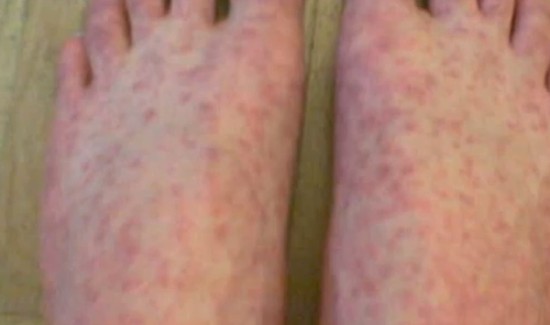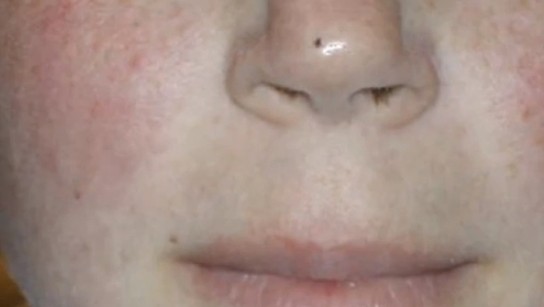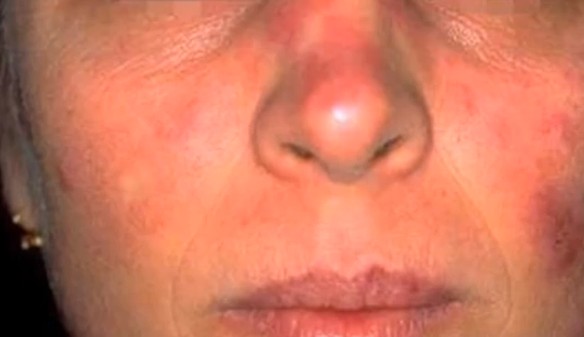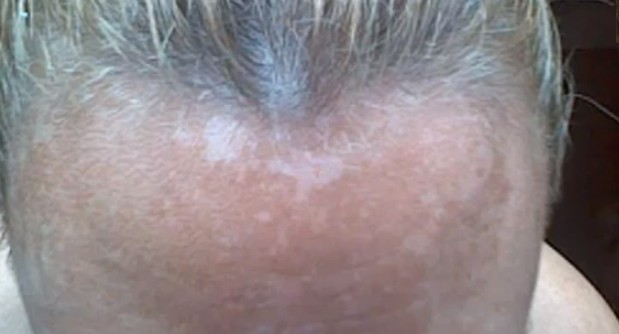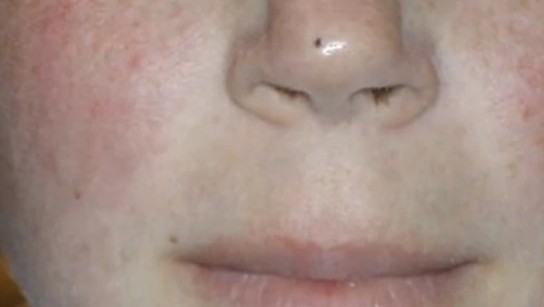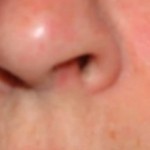The Malar rash is named from the Latin word for cheek, which is “mala”. The rash is also called the butterfly rash since it occurs on both sides of the cheekbone and meets over the nose, forming a shape that is similar to a butterfly spreading its wings. The rash is usually purple or red in color in a blotchy pattern. However, there are cases where the rash presents as a solid color. The affected area can have a raised pattern, or may be flat. People who suffer from the severe form of malar rash complain of feeling hot in the affected area. For people who are suffering from the mild form, they will only experience a mild itch over the area.
The malar rash has also been called the lupus butterfly rash. The rash is found mainly in people who are suffering from systemic lupus erythematosus (SLE), but this only occurs in about 40% of the patients. If you take note, you will find that most organizations that deal with issues related to lupus have a butterfly in their logo.
What are the causes of Malar rash?
SLE is a condition where the pathogen attacks the body’s tissues, cells and organs. The disease is an autoimmune disorder that lowers the body’s defense against pathogens. In some cases the attacks on the organs cause them to become dysfunctional and this may end up becoming fatal. The disease attacks the brain, liver, heart, lungs, joints, blood vessels, and the skin and central nervous system. The fact that lupus does not have a causative agent, makes it very difficult to manage this condition. There is a genetic trend in the manifestation of the disease. People also say that the disease can arise out of exposure to environmental pollutants. Lupus affects both men and women, although it is predominantly found in women, who are in their childbearing ages of 15 – 44. The elderly and children can also be affected by this condition. Lupus has been found to affect people from African, Asian and Latino descent. About 40% of people who are suffering from lupus will get the malar rash.
Other causes of the malar rash include Bloom syndrome, Lyme disease, Erysipelas, Seborrhea or Seborrheic Dermatitis, Dermatomyositis. Once you get malar rash, you should see a doctor immediately so that the skin of the face, which is very sensitive, is not permanently affected.
What is the treatment/management of malar rash?
When you get malar rash, you should start using sunscreen. This will help in reducing the itching or burning sensations especially when you go out into the sun. The sunscreen that you use should have UVA and UVB protection and they must have an SPF factor that is greater than 30. You should avoid sunlight as much as possible even if it means wearing headgear to protect your face.
You should also use steroidal creams which help in reducing the feeling of itching or burning. The inflammation causes by the rash can be very uncomfortable and you may spend the day scratching your face or rubbing it with slightly-abrasive materials such as wool. The steroidal creams sometimes cause the dilation of the blood vessels so they should be used sparsely on the face, lest you acquire a blotchy appearance.
You can also use drugs that do not have steroids, but which combat the rash as well as reduce the inflammation. Some of these drugs include the disease modifying anti-rheumatic drugs (DMARDs) and Immunosuppressive drugs class of drugs. These drugs help in stopping the rash from reoccurring again.
You can also use home remedies to treat malar rash. These include Vitamin E oil, cod oil, olive oil, and also adding some baking soda to the affected areas. These will help in reducing the pain, and irritation associated with the rash. You may also use oatmeal baths from the pharmacy, and use them with tepid or warm water. How water will only serve to aggravate the rash. You can also apply the gel from freshly cut Aloe Vera, which helps in soothing the affected area.
How to prevent the rash
People who have lupus should avoid the sunlight as much as possible. They should wear wide brimmed hats and long-sleeved clothing when they are outdoors. They should also keep sunscreen close at hand, and it must have an SPF of more than 30, and should protect against UVA and UVB rays. If you must go outdoors, then you should try to do so in the morning or late in the afternoon. The midday sun will affect anyone who has malar rash, even if he or she is wearing protective hats. This is because of the heat that radiates up from the ground, caused by the strong sunlight that occurs at midday. People with malar rash should choose to stay in temperate climate rather than equatorial ones.
Malar Rash Pictures
